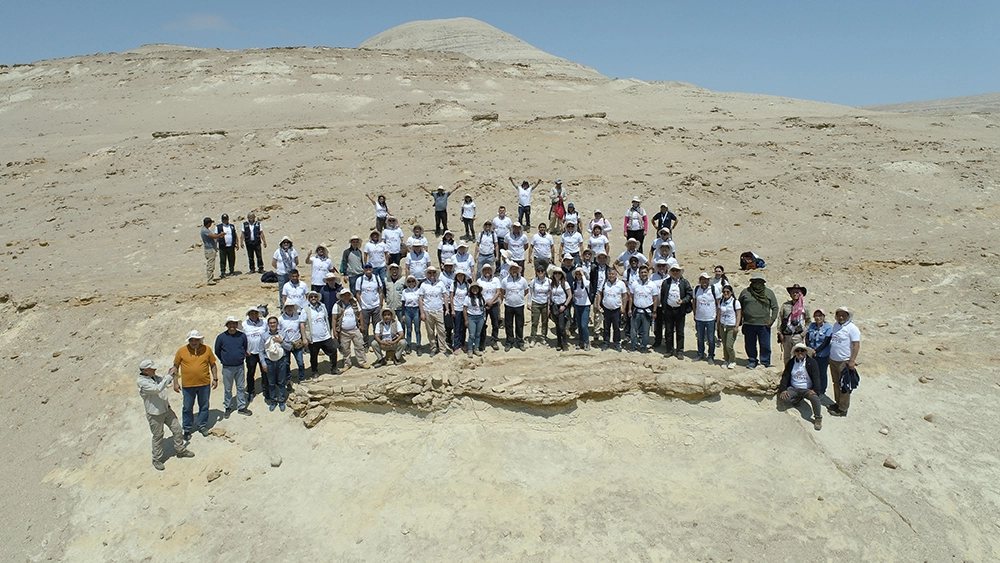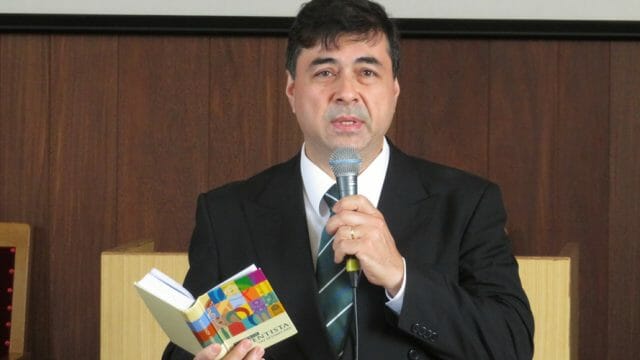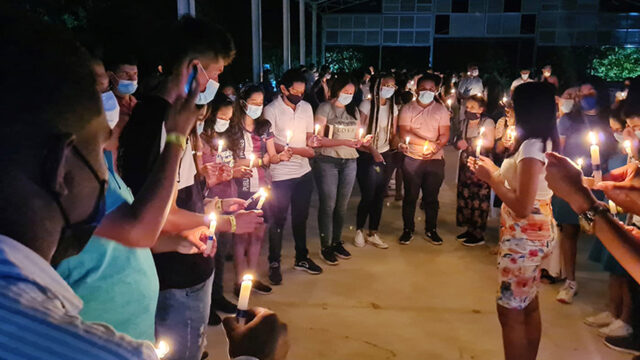Scientists, Adventist leaders, and students gather for the Fourth Conference on Faith and Science

Despite the tension and conflict that sometimes exist between faith and science, those on the side of biblical faith have never renounced an encounter and dialogue with science. This idea was emphasized at the recent Fourth Conference on Faith and Science in Peru, which took place September 6–10, 2022. Leading researchers, Adventist Church leaders, and young students from all over South America attended the event.
As a framework for a paleontological experience, the programming included traveling about 300 kilometers (about 185 miles) from the city of Lima, the country’s capital, to visit the places where the largest number of marine fossils discovered to date has been recorded: Cerro Blanco and Cerro La Bruja, in Ocucaje, Ica.
When participants set foot on the land of Ocucaje, which is surrounded by hills carved by the Ica River and abounds in vines, mangoes, figs, dates, and watermelons, an obvious question arose: How is it that this place became the largest paleontological cemetery in the world? How did so many cetaceans end up fossilized in a specific area like this?
Paleontological Evidence of a Flood
Roberto Biaggi, specialist in paleontology and with a master’s degree in geology, explained that “with these specimens, a burial occurred suddenly and quickly.” He added that, of the whales found in Pisco, for example, three pieces of evidence are observed: “Excellent, outstanding preservation, all the bones of the whales are fully articulated, and the filtering apparatus [baleen] is well preserved.”
Normally, the baleen of the whale begins to decompose two days after it dies. These details speak to the reality of a sudden catastrophic event, such as the flood described in the Bible, Adventist researchers said.
Geological Studies Confirm the Biblical Account
Another important line of research and a relevant voice in the Faith and Science meeting has been in the area of geology, especially regarding the Coastal Batholith of Peru, which has been studied extensively in the past 30 years. The study has mostly concentrated on igneous rocks, which are the rocks that come from the interior of the earth.
The study consists of observing and analyzing the behavior of magma in the Peruvian Andes. This requires the well-trained eye of researchers and experts, who have been studying the rocks that extend from Ica to Juliaca. More than 16 scientists from all over the world are working in Peru, including three Peruvians.
Peru has deposits of silver, copper, lead, zinc, gold, iron, and antimony, among many other minerals. The big question for geologists is, How did this great diversity of metallic minerals form? Was it through very peculiar geological processes, shaped by tectonic, magmatic, and mineralization events over many centuries?
The rocks adjacent to the Pisco River and Hualla Grande has been controversial because traditional geology states that these rocks were formed slowly, over thousands and thousands of years. However, the team of scientists working in Peru has been demonstrating, through the modeling of the cooling rate of igneous rocks, that this process of rock formation occurred in much less time.
Intersections between Faith and Science
Regarding the significance of the event in Peru, senior researcher Ben Clausen was asked: Is it possible to have dialogue and find points of agreement between a Christian scientist and one who is not? Clausen, who holds a doctorate in nuclear physics, shared his experience. “I [have] found many points in common with a non-Christian scientist who has more than 200 indexed papers,” he said. “Faith and science are not irreconcilable.”
The original version of this story was posted on the South American Division Spanish-language news site.







